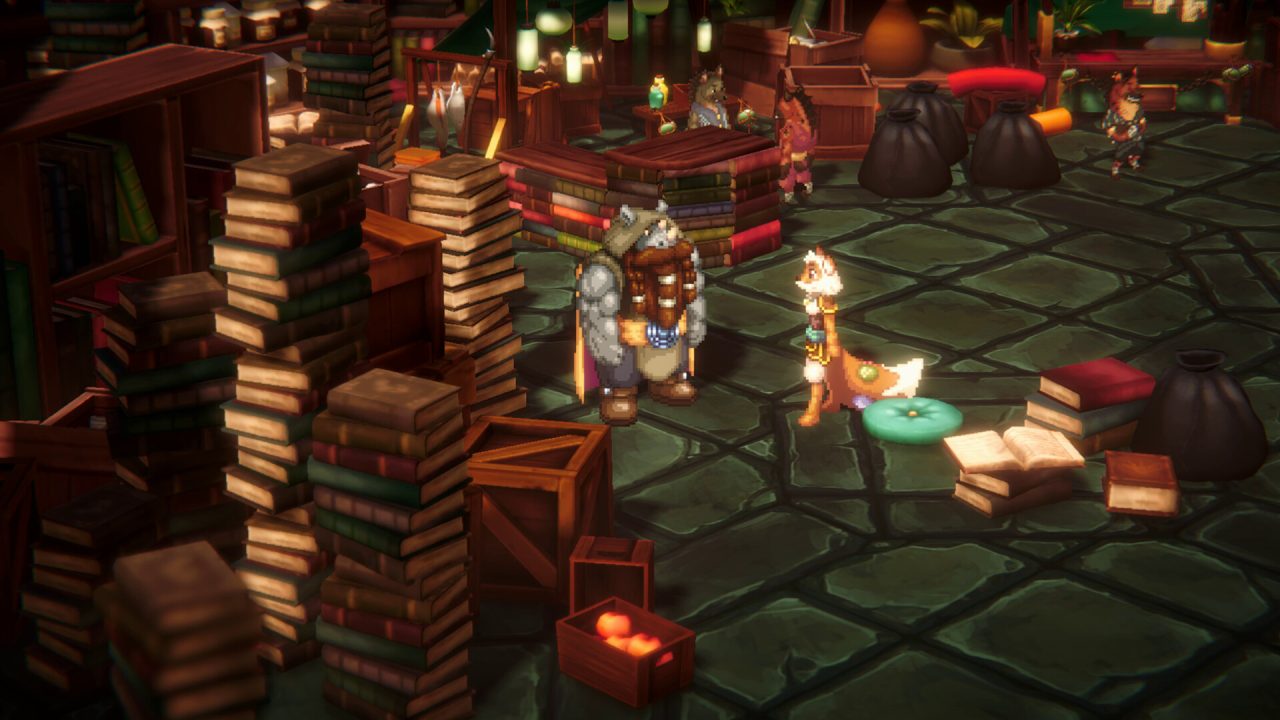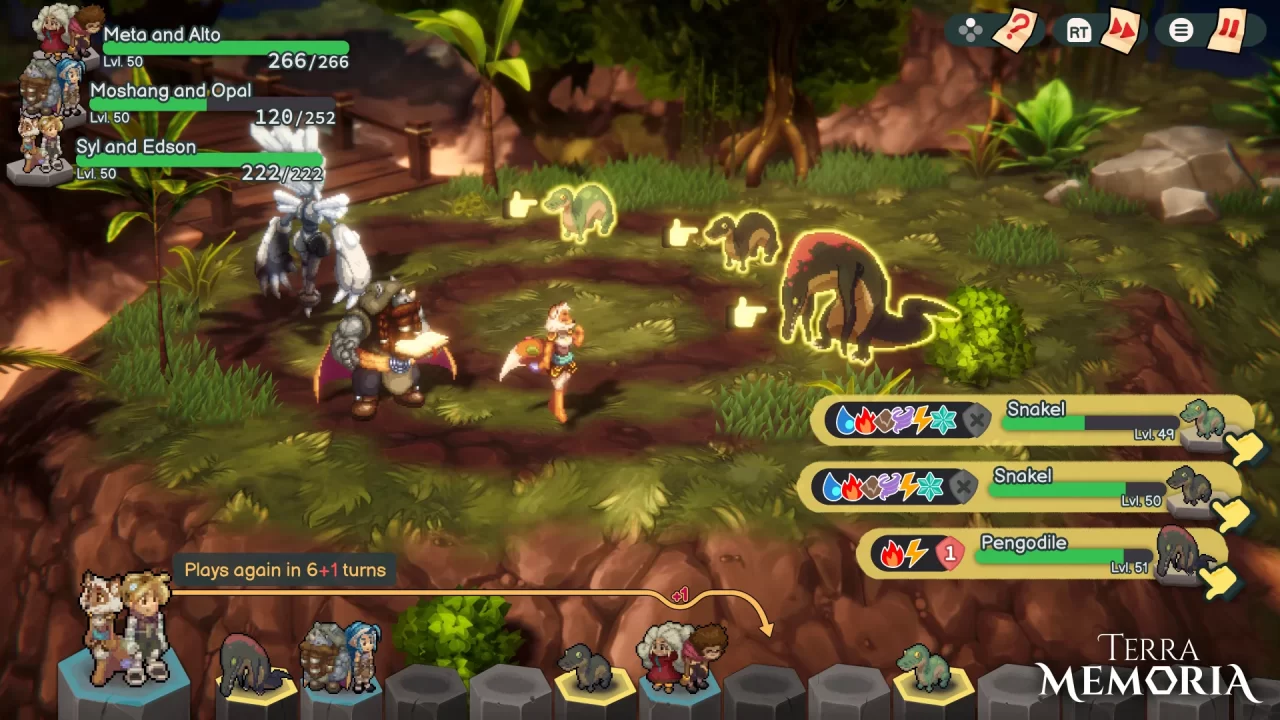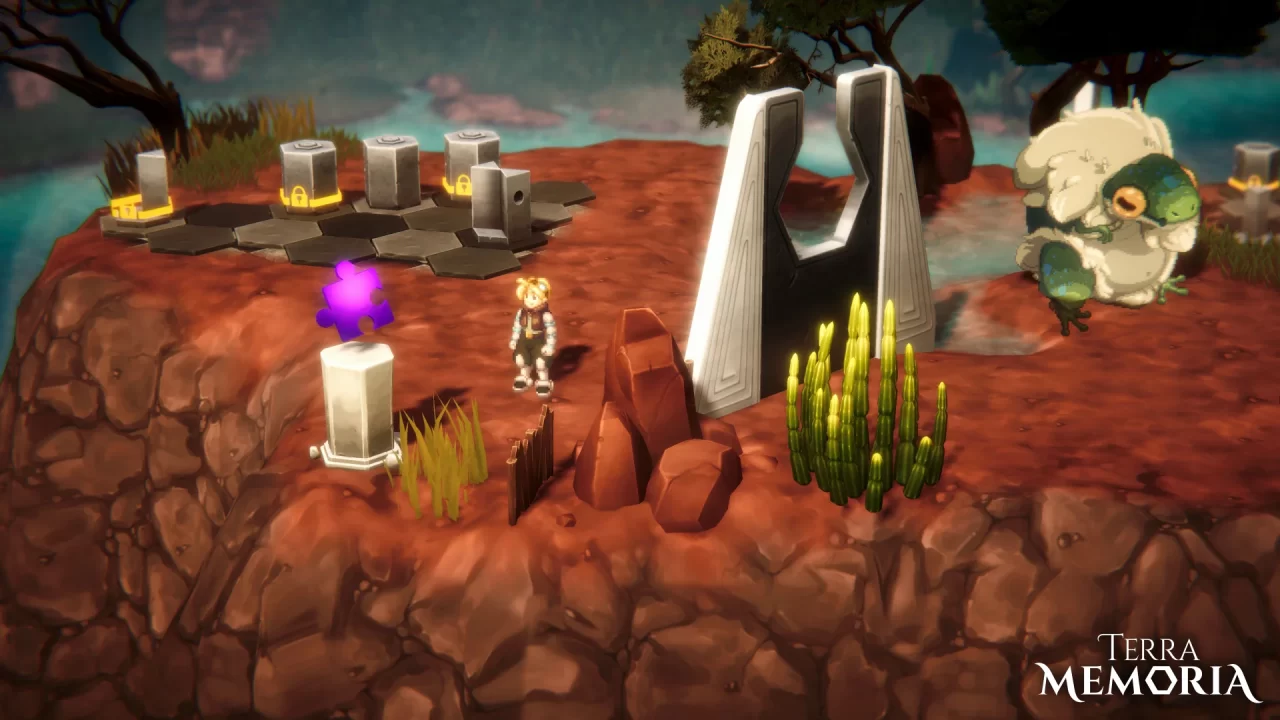Cast your minds back to the halcyon days of the 90s: sprite-based games with 3D environments were just taking off, and a beloved franchise called Breath of Fire blessed us with its third entry. It’s the essence of this era that French development company La Moutarde wants to capture with their first full RPG release, Terra Memoria. On looks alone, the game wears its influences proudly on its sleeve, but how do the rest of its elements hold up alongside other modern releases? Let’s hop on a Mage-powered train and find out!
I’m going straight in with the visuals here. While Square Enix may have popularised their HD-2D style of sprites on 3D backgrounds, it’s really nothing new, and Terra Memoria stands as a beautiful ode to games like Breath of Fire 3 and Wild Arms 2 with its visual presentation. It echos Breath of Fire in particular since that series is known for its diverse cast of anthropomorphic characters, something that Terra Memoria has a lot of fun with. The character design and sprites stand out from the moment you start the game and begin exploring the starting city, Constance.
The character sprites are a visual treat, with several distinct and interesting races within the world of Terra. I loved how the bulky rhino people of the Mercki tribe make the fox-like Karsaks look distinctly elegant and nimble and how the tiny children NPCs looked positively adorable next to their adult counterparts. There’s a good assortment of other animal representations, including everyone’s favourite: the humble sloth. While the team aren’t credited on individual character designs, La Moutarde’s 2D artists, Anthony Expert and Alicia Val, really did themselves proud here. Despite the key influences from Breath of Fire’s thematics, I also saw similarities to games like Grandia and the sprite-based entries in the Atelier series.
The 3D environments perfectly complement the sprites and manage not to look jarringly juxtaposed despite having extra planes. Elise Ramseier, alongside Val, brought the world of Terra to life with delightful attention to detail. I always find smaller touches like grass and foliage animations moving with the breeze to help massively with immersion. The team are clearly masters of their craft and knew exactly what feelings they wanted to evoke with every pixel and polygon onscreen. Special shout out to the beautiful food visuals; I’m not much of a foodie in real life, but there are a staggering number of recipes in this game, and each individual meal made me want a Terra Memoria restaurant to exist.
The first main character introduced is a Mercki Mage called Moshang. Alliteration! Merckis are apparently not naturally suited to the mage life, and introducing Moshang first is a great way to immediately focus on magic and its users. Magic is wholly central to nearly every theme in Terra Memoria, impacting everything from its sociopolitical setting to its combat. The city of Constance has a core set of self-fulfilling and eponymous beliefs, similar to the appropriately French saying “que sera, sera.” The Constant Mages are fending off invasions from mechanical beasts known as Carcasses, and the people of Constance rely on the mages to keep them safe. Each of the three main characters you can deploy in combat is a different class of mage, and the game’s story beats revolve around the relationship between Terra’s latent magic and its relationship with the world around it.
Some aspects of the narrative make interesting real-life correlations, such as how natural energy resources are finite. This angle invites a comparison to games like Final Fantasy VII and its Lifestream. However, Terra Memoria’s worldbuilding stands firmly on its own and never feels derivative or overly familiar. While the story itself is lighthearted and actually quite short, its pacing is fantastic. I never felt bored, and the way characters interacted with global issues was very compelling. In this climate of 80-hour epics, it’s refreshing to have a short, fun, and memorable burst through such an enjoyable world. Even doing all the side content, my playtime clocked in at just under 20 hours. I’d have loved more but appreciate that the game fulfilled what it set out to achieve. It means the game never overstayed its welcome or became a chore, and didn’t suffer from over-padding.
Complementing the visuals and story, Terra Memoria features a soundtrack of just over 80 songs composed by Yponeko. I used my Steam Deck for this playthrough, and a common behaviour for me while grinding and doing busywork in RPGs is to turn the volume off. However, each track was so beguiling that this was a rare exception where I kept the volume on the whole time. My Deck’s battery hated me, but my ears loved it. “Beguiling” may seem like a melodramatic choice of adjectives, but there was just something engrossing about Ypneko’s work. As a complete soundtrack, it drew influences from different genres, from jazz and country to more traditional orchestral soundscapes and even a ridiculous number of instruments from around the world. I applaud Yponeko for keeping such a cohesive identity to the music as a whole. I’m not sure whether this is a signature of Yponeko’s breadth as a composer or whether he specifically aimed to express the diverse world of Terra, but mission accomplished either way. As the kids say these days, no skips.
Combat is turn-based in Terra Memoria, simple in execution yet more complex with its random elements. While you only recruit three characters actively partaking in battle, you also recruit three passive characters who alter your abilities in fun ways. Characters team up as duos with active and supporting member pairs. The three support characters have skills like making single-target abilities affect multiple targets or turning damaging spells into healing spells. The duos are randomised at the start of every battle, which may sound slightly chaotic, but you can choose to use the original version of an ability or its altered version. Another “Edit” to abilities is to change their element, which gets fun, as it’s instrumental in breaking through enemy shields. In a similar fashion to the Octopath Traveler games, enemies have elemental weaknesses, and hitting them a certain number of times will render the foe vulnerable to all elements. I really enjoyed the randomly assigned duos: it prevents battles from becoming stagnant and adds enough variation between fights that you still have to think which action would be most beneficial instead of just mashing through the menus.
Levelling up in Terra Memoria is handled similarly to Xenoblade Chronicles 2 or Final Fantasy XV: you acquire experience from each battle, but it only manifests as level gains when you rest. There are plenty of inns and campsites at which to rest, so the system does feel slightly redundant, but it also acts as a way to further encourage camping. For starters, you can cook and craft at camp, and food provides some useful HP boosts. You only cook each meal once and its HP boost becomes permanently added to all of your characters. There’s a fun cooking rhythm game for each meal, and as I said before, the artwork for each meal is beautiful. Like, I need a chocobanana pizza immediately beautiful. Images you can taste. Chef’s kiss. Yes. You can also craft Pins while camping, which are Terra Memoria’s spin on traditional equipment. There are a few main stats, such as power, defence, and speed, and the rest of the boosts are for specific elements. You need to juggle Pins depending on what abilities you want to use, as while they add points to one or two elements, they can also detract points from another.
While exploring the world of Terra Memoria, you come across Skill Puzzles scattered in most areas. These fun little tasks involve moving statues around on a grid and arranging them so that they all resonate at the same time when struck by magic. It’s hard to describe without a visual, but I found them difficult enough to feel a cog turning in my head without frustration or taking too long to solve. Your reward is new abilities for your party members, and it’s the only way to acquire them outside of a few NPC interactions. It made the character development feel lore-appropriate, and while each character can only learn eight abilities in total, you must choose which four you will take into battle. Given the way support characters mix up combat, it feels like just enough to keep things fresh without overcomplicating. If you ever miss any of these puzzles, there’s a handy Karsak NPC who tells you where to go to find them.
The final aspect of Terra Memoria I want to mention is its town-building feature. Shortly into your playtime, you reach the desolate town of Beegihn, and it is your oyster. It’s worth noting first and foremost that there doesn’t seem to be an intrinsic link between how you choose to build Beegihn and any other gameplay systems; there are a handful of quests to complete there, but they’re all to further your options for construction. For example, while you may unlock different models for houses, they don’t provide any form of stat boost or anything that helps in combat. I can see why the developers chose to do this, as it means you can ignore it if you want to, but it also feels a little pointless. The NPCs remain exactly where you place them and don’t move, so there’s no simulation aspect to it, either. If it brings you joy to simply decorate and customise a small town, you’ll love it. However, in a sequel, I’d love to see this part of the game fleshed out to be more akin to the Faery town of Breath of Fire 3.
I was quite pleasantly surprised by the fun I had with Terra Memoria. I found it thoroughly entertaining from start to finish, mostly based on how snappy the game felt to play and how joyful it was to look at and listen to. As a fan of RPGs, it’s put the development studio, La Moutarde, on the map for me, and I will eagerly anticipate any future projects of theirs. I could tell that the game’s director, Francois Bertrand, had a clear vision for what he wanted the game to be. I can excuse that this title isn’t a romping deep epic because it never tries to be. It is the studio’s own take on classic JRPGs, and it’s surprisingly rare to see such a successful attempt. They’ve avoided creating a stale rehash by designing a modern game that neither wears the clothes of an old game nor stumbles over the mistakes of its senior games. Terra Memoria is a taste of something great and wraps things up before it loses momentum.





